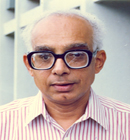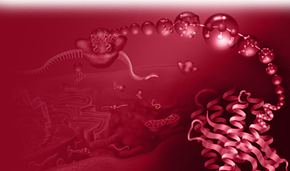|
|

|
|
Science Sparks @ ACTREC
|
 20th June 2022 20th June 2022 |
Vol. No. 11; Issue No. 531 |
|
|
Publications
|
|
1. Maitre M, Gupta T, Maitre P, Chatterjee A, Dasgupta A, Moiyadi A, Shetty P, Epari S, Sahay A, Patil V, Krishnatry R, Goda J, Jalali R (2022). High-dose salvage re-irradiation in recurrent/progressive adult diffuse gliomas: development of a novel prognostic scoring system. Cancer Radiotherapy.
2. Turco F, Armstrong A, Attard G… Murthy V, Oh WK, Ekeke Onyeanunam N, Ost P, O'Sullivan JM, et.al (2022). What experts think about prostate cancer management during the COVID-19 pandemic: Report from the Advanced Prostate Cancer Consensus Conference 2021. European Urology. 82(1):6-11.
3. Gillessen S, Armstrong A, Attard G… Murthy V, Oh WK, Ost P, O'Sullivan JM, et.al (2022). Management of patients with advanced prostate Cancer: Report from the Advanced Prostate Cancer Consensus Conference 2021. European Urology. 82(1):115-141.
4. Joshi T, Mantri M, Hadgaonkar S, Rao N, Dhondge R, Jaiswal D, Mathews S, Qayyumi B, Chaturvedi P, Shankhdhar VK (2022). Outcome Analysis of Advanced Oral Cancers Requiring Large Composite Fibular Osteocutaneous Flap Reconstruction: Experience From a Tertiary Care Cancer Hospital. Annals of Plastic Surgery. 88(6):635-640.
5. Das S, Dholam K, Gurav S, Bendale K, Ingle A, Mohanty B, Chaudhari P, Bellare JR (2022). X-ray computed microtomography datasets for osteogenic nanofibrous coated titanium implants. Scientific Data. 9(1): 348.
6. Saikia D, Jadhav P, Hole AR, Krishna CM, Singh SP (2022). Growth kinetics monitoring of gram-negative pathogenic microbes using Raman Spectroscopy. Applied Spectroscopy.
Thesis
Sumit Kumar Mishra. 2022. Evaluation of gold-nanosphere based photothermal therapy potential in mouse model of cancer. (HBNI No.: LIFE09201604016) (Guide: Dr. Abhijit De)
|
|
|
|
|
Interesting Reads
|
|
Beck J, Sankowski R, Schwabenland M, Prinz M, Schüller U, Killmer S, Bengsch B, Walch AK, Delev D, Schnell O, Heiland DH. Spatially resolved multi-omics deciphers bidirectional tumor-host interdependence in glioblastoma. Cancer Cell. 40(6):639-655.e13, 2022.
|
|
|
Legends of Science
|

|
Dorairajan Balasubramanian
Dorairajan Balasubramanian, a biophysical chemist, and an ocular biochemist earned his Ph.D. from Columbia University, the USA, in 1965. His significant research included the biochemistry and cell biology of the eye, particularly cataract or glaucoma. His study revealed how cataract is caused when crystallins are damaged photochemically, leading to diminished lenticular transparency. He is an elected member of the Indian National Science Academy (INSA), Indian Academy of Sciences (IAS), National Academy of Sciences, India (NASI), Third World Academy of Sciences (TWAS), and the American Association for the Advancement of Science. He is also a Fellow of the Academy of Sciences Leopoldina, Germany, Mauritian Academy of Sciences, and the International Molecular Biology Network. Dr. Balasubramanian is the recipient of many prestigious awards, The SS Bhatnagar award in 1981; Padma Shri in 2002; the Fukui Award of the National Foundation for Eye Research, United States, in 1991.
|
|
| |

|
Ranjit Kumar Banerjee
Ranjit Kumar Banerjee obtained his Ph.D. from Kolkata University in 1972. He isolated and characterized an ATPase from the avian myeloblastosis virus and phosphate transport carrier from mitochondria. His significant research is the single-step isolation of Ca +2-ATPase from the sarcoplasmic reticulum. He made a major contribution to establishing the role of reactive oxygen species in both H. pylori-mediated and non-mediated gastric ulcers. He showed the efficacy of Neem Bark extract in curing hyperacidity and gastroduodenal ulcers in patients with no adverse effects. Dr. Banerjee was the elected fellow of the Indian Academy of Sciences, Bangalore, in 1993; the National Academy of Sciences, Allahabad, in 1997.
|
|
| |
|
|
|
|
Do You Know?
In 1962, A heat-stable, antigenic factor responsible for the accelerated development of the incisors and eyelids was identified, which was later called the epithelial growth factor.
|

|
|
|
Cancer News
|
|
|
| |
|
|
| |
|
Immunotherapy booster produces 10,000 times more cancer-fighting cells
|
|
16 June 2022, NEW ATLAS
|
|
Researchers at Washington University in St. Louis have found that adding a booster protein can significantly improve the outcome of cancer immunotherapy. Tests in mice showed the protein produced 10,000 times more immune cells, with all mice surviving the entire experiment...
|
|
|
| |
|
|
|
|
|
|
� 2022 Advanced Centre for Treatment, Research and Education in Cancer (ACTREC)
|
|
